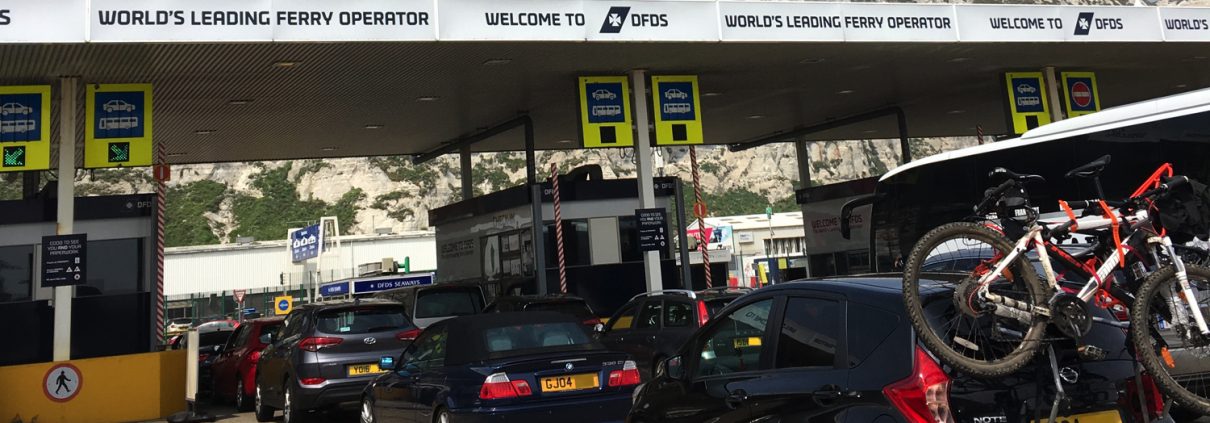Know Before You Go: What Do You Need To Drive To France?
Last Updated on
When I was a kid, driving to France for a summer holiday was a nailed down event in our family calendar. The Pound was incredible strong against the Euro, and the guarantee of warm weather vastly outweighed even the best British summer sun predictions from the Met Office.
But then the Pound fell. More British holidaymakers started taken staycations. It was like Brexit had taken on a literal form, and people were refusing to cross the channel and stay at home because of perceived economic benefits.
Having just returned from a week long holiday to the Loire Valley, in the centre of France, I can safely say summer holidays to France are back in the calendar. We ad a fantastic time, a seamless channel crossing, and enjoyed wine, bread and cheese aplenty in one of the most scenic parts of France.
But for those that have never driven to France, or indeed in Europe, what do you need to take with you, and what do you need to know before you go?
Some of the driving laws in France changed in 2017, so here’s some driving tips and advice, and key questions you might ask before you head to France.
KEY REQUIREMENTS
It goes without saying you need to take your driving licence with you. I would also recommend taking digital copies of your V5 registration document, and your travel insurance.
French law also requires you to carry breathalysers (yes, really), a warning triangle, a spare bulb kit, headlamp beam deflectors (depending on your car, you will either need deflector stickers or have to adjust the beam manually), a GB sticker (or ‘euro’ registration plate featuring the GB initials), and a high vis reflective jacket for each person in the car. I bought a European driving kit from Amazon that contained all of this equipment for £25. You can pick up extra high vis jackets on eBay for less than £3 each.
DRIVING TIPS
I found driving in France really easy. If you’re used to UK roads – especially in and around London – then you’ll find France incredibly easy to drive around. Aside from the main roads around the ports, the roads are empty and the driving is actually pretty relaxing.
Just remember to drive on the right. And watch out for speed limits. On the main motorways, the speed limit is 130km/h, which is around 85mph, but this often reduced to 110km/h around key junctions.
Keep an eye on petrol / diesel levels. Service stations can become sporadic the more rural you get in France, so make sure you’re topped up and never less than a quarter of a tank full at any point. Filling up is straightforward also.
Watch out for tolls. I wasn’t aware there were so many toll roads on our route down to the Loire Valley. From the main road South from Calais, through Rouen, round Le Mans and down to Angers, we racked up around 60 euros worth of toll fees. As such, keep cash and change ready in the car, as some booths had broken card machines when we arrived at them!
TAKE THE FERRY
We weighed up various costs and options for travelling to France. We were a party of 3 adults in our car. We looked at the Euro Tunnel, which was costly. We looked at flying to Tours and then hiring a car, which was equally as costly.
Taking a ferry across the Channel was the best an cheapest option. We looked at Newhaven to Dieppe with DFDS, but we were eventually sold on the standard Dover to Calais crossing with DFDS, mostly because the ferry times were more frequent and cheaper.
To make things even cheaper, we took an earlier ferry on the Friday afternoon (before the rush of Friday Bank Holiday weekend traffic), and stayed in an Airbnb in Fort-Mahon Plage on the Friday night. Not only did this break up the 8 hour drive, but it also worked out brilliantly as we had more space on the ferry, and got to explore a part of France we wouldn’t have visited otherwise. The ferry cost £165 for the three of us, including priority boarding to get us first on & first off the ferry, and the Airbnb was £20 each. Bargain!
OTHER QUESTIONS, TIPS & ADVICE
Have a peek at the other commonly asked questions below. If you can think of anything else, please let me know in the comments below! 🙂
Do I need a GB sticker when driving in France?
Yes, you do. Unless the car you are driving to France includes ‘euro’ registration plates, which feature the GB initials to the side of your main registration number.
Can you get a speeding ticket after being flashed in France?
In short, yes. A new EU cross-border directive is now in place, which is aimed at tracking down people who commit traffic offences in cars that are registered in the UK, but who were caught speeding in France. I got flashed on the way back to Calais, and awaiting my comeuppance.
Do I need a Crit’Air clean air sticker?
Introduced in late 2016, the French clean air stickers – called Crit’Air vignettes – are part of a six-category sticker system that applies to all motor vehicles to identify what emissions they produce. They are only required in certain cities, including Paris. Find out more here.
Can I use a speed camera / Radar detector in France?
Nope, afraid not. Speed camera / radar detectors are illegal in France. If you are caught with one in your vehicle, you are liable to receive a fine, confiscation of the device and potentially the vehicle.
How much alcohol and cigarettes can I bring back to the UK?
Another reason driving to France is popular: so long as the wine / beer / spirits are for your own personal use, you can take as much as you like, up to the following limits:
- 90 litres of wine (only 60 litres of this can be sparkling wine)
- 10 litres of spirits
- 20 litres of fortified wine (such as port)
- 110 litres of beer
When it comes to cigarettes, you are allowed 800 cigarettes AND 200 cigars OR 400 cigarillos AND 1kg of tobacco.





Trackbacks & Pingbacks
[…] One a good run from Calais, the farmhouse is around a 5 hour drive, but be aware of tolls and other driving considerations. […]
Leave a Reply
Want to join the discussion?Feel free to contribute!